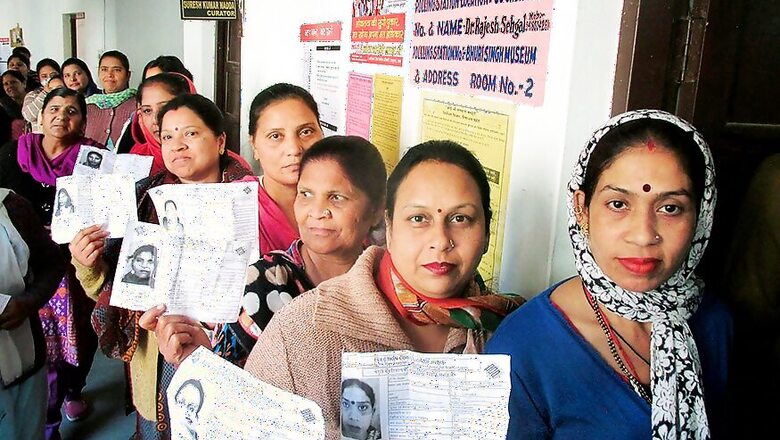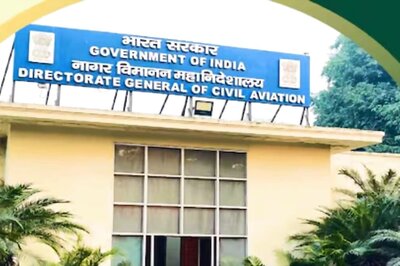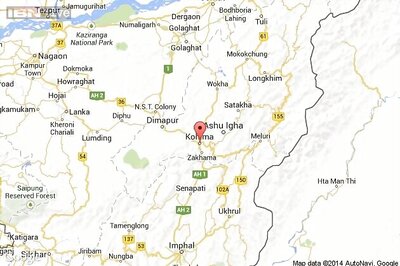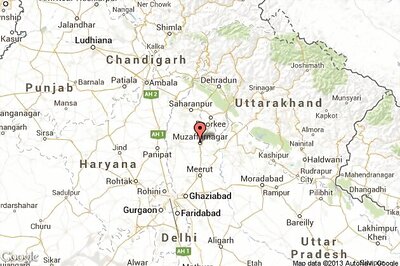As Party Manifestos Try to Woo Women Voters Again, Here’s How BJP Fared on Promises for Them in 2014

views
As 97 constituencies, spread over 13 states and Union Territories prepare to go to the hustings for the second phase of polling, data indicates that this time too, the Lok Sabha elections are characterised by a rising trend of women’s participation in electoral processes. Over the years, more and more women have asserted their right to franchise and are now expected to record a higher voter turnout than men.
That’s why, perhaps, reservation for women in electoral politics, women-centric policies and the promise to ensure their equal rights, have once again featured eminently in the manifestos of the two national parties— Bharatiya Janata Party (BJP) and the Congress.
Earlier, in 2014, the BJP had devoted an entire section of its manifesto to women empowerment, with 33 per cent reservation for women in Lok Sabha as well as state Assemblies, as its key plank.
An analysis of the promises made by the ruling party, however, reveals that not much has changed on ground in five years. Not only has there been a continuous decline in both, the allocation of funds under the gender budget and in the expenditure of the Ministry of Women and Development during the BJP-led government, but crimes against women have steadily been on the rise.Welfare Schemes Aimed at Women
The BJP manifesto for 2019 proposed to continue with the Beti Bachao Beti Padhao (BBBP) scheme. It further claimed that women have benefited from other flagship government programmes like the Ujjwala Yojana and the Pradhan Mantri Awas Yojana.
However, of the Rs 168 crore allotted for BBBP during 2014-17, the government released only Rs 128.59 crore. Similarly in 2017-18, while Rs 200 crore was allocated, the actual expenditure came down to Rs 169.10 crore. Moreover, there have been several anomalies in both spending of money and implementation, a concern which was also flagged by the Comptroller and Auditor General (CAG) of India.
As per a CAG report, of the total Rs 6.36 crore released by the Union government to Punjab during 2014-16, only Rs 0.91 crore was utilized till March 2016. “Infrequent task force meetings adversely affected the implementation of scheme in 11 districts while the scheme could not be started in nine districts,” it said.
The 2017 report on Uttarakhand stated, “Only Rs 0.2 crore was released to selected districts for implementation of the scheme out of Rs 0.77 crore, of which, only Rs 8.90 lakh (12%) were utilized, which defeated the objective of checking the decline in the child sex ratio.”
In Haryana, the scheme’s aim to improve sex ratio at birth, increasing girls’ enrolment in secondary education and 100% re-enrolment of drop-out of girls could not be ‘fully achieved’. Of the provisioned Rs 14.28 crore, only Rs 8.08 crore was released by the Union government. Moreover, only Rs 5.31 crore of the total amount was spent from January 2015 to March 2016.
The scheme was implemented in 20 districts, out of which three were audited by the CAG.
The CAG report found that only one meeting was held at the state level and that no meetings were convened at the district level in the period, even when the scheme mandates quarterly meetings. Additionally, of the Rs 15 lakh to be awarded to schools in three districts, only Rs 1 lakh was given during 2015-16.
Interestingly, Panipat’s District Programme Officer allocated a budget of Rs 5 lakh to Civil Surgeon, of which Rs 3.01 lakh was spent in making a ‘theme gate’. On the other hand, the Women and Child Development department spent Rs 21.24 lakh for the purchase of ‘1,800 laptop bags and 2,900 mugs’.
The fact that there has been an unnecessary usage of funds, is further backed by data, which suggests that of the total sum spent under the scheme in 2017-18 and out of the total planned expenditure for 2018-20 – on an average, about 47% has been allocated solely for media campaigning. This is against a meagre 27% allocated for community-level activities and a dismal 5% each for education, health, and training and capacity building.
Underscoring women’s responsibility to cook mostly, the government has counted the Ujjwala scheme as one of its significant contributions for women welfare. Government data boasts a figure of six crore households which received LPG connections under the scheme. But, upon closer inspection, it is revealed that about 1.5 crore (26%) of them have not availed the Ujjwala loan, while 1.2 crore did not opt for the refill. This trend could be attributed to the continuously rising cost of LPG cylinders.
An analysis of the Pradhan Mantri Awaas Yojana-Gramin also indicates that while the number of total beneficiaries are decreasing over the years from 2016-17 to 2018-19, the number of women beneficiaries are on a further decline.Maternal Health
Through the Sankalp Patra, the BJP promised to fully immunize children and pregnant mothers by 2022; and to provide accessible and affordable maternal healthcare services through schemes like the Pradhan Mantri Matru Vandana Yojana (PMMVY), Pradhan Mantri Matritva Suraksha Abhiyaan (PMMSA) and Ayushman Bharat.
A look at the official data, however, reveals that much of these schemes haven’t even taken off properly. In 2017, only about 4% beneficiaries could get aid under the PMMVY, which was previously called the Indira Gandhi Matritva Sahyog Yojana.
An RTI reply revealed that till November 30, 2018, the government had distributed Rs 1,656 crore among nearly 20 lakh eligible mothers. However, it spent Rs 6,966 crore to carry out the process of distributing the amount. This means that the government spent over four times more as administrative expenses to actually release the total funds.
From 2014, more pregnant women were given antenatal check-ups (ANCs) and the percentage of institutional deliveries have also marginally improved. However, the data repository has stopped tracking tetanus immunization and provision of iron/folic acid (IFA) tablets to the pregnant women from 2017. Of the women registered for the ANCs —not the estimated ones—on an average, 85.2% women were given tetanus immunization and IFA tablets in 2017. This figure came down to 79.9% in 2018.
The CAG had earlier pointed gaps in the implementation of National Rural Health Mission in Tripura during 2015-16, and said that a third of the pregnant women did not receive tetanus and 40% of them also did not get IFA tablets. “In the last five years, the department could not track the fate of about 29-33% of registered pregnant women for which no reasons were found on record.” The state had a high prevalence rate of Anaemia amongst 54.4% of the pregnant women; and 36% of pregnant women did not receive proper ANC,” it said.
The India State Level Disease Burden Initiative report has also flagged the emerging burden of iron-deficiency anaemia, which is yet to be addressed in the National Immunization Scheme.Employment for Women
As per the leaked NSSO report, with unemployment at a 45-year high, the women are the worst hit. Unemployment among rural women, aged 15-29, rose from 4.8% in 2011-12 to 13.6% in 2017-18. For the educated rural women, the figure rose from 15.2% in 2011-12 to 17.3% in 2017-18.
To involve more women in workspaces, the party this time, proposed to encourage industries and corporates to generate better employment opportunities for women. For this, it plans to procure 10% of the material sourced for the government from micro, small and medium enterprises, which have at least 50% women employees.
Amending the Maternity Benefit Act 1961 in 2017, the government had mandated for every organization with a minimum strength of minimum 50 employees, to have crèche and child care facilities. The amendment also increased the maternity leave to 26 weeks from the earlier 12 weeks.
The party has now promised to further facilitate crèche and child care facilities in the informal sector as well, by leveraging Anganwadis and civil society organizations.
As per a report by the Centre for Monitoring Indian Economy (CMIE), the entire brunt of the fall of employment in the aftermath of demonetization, was borne by women. “Of the 11 million jobs lost, women lost 8.8 million jobs .... Urban men did not lose jobs… Women lost jobs in both urban regions (2.3 million) and rural regions (6.5 million),” it said.Crimes against Women
As a part of its pledge to create ‘One India, Great India’, the BJP in its 2014 manifesto, had promised to address the issue of the rising incidence of crimes against women.
However, the National Crime Record Bureau (NCRB) report, that analyses crimes against women in the country, has not been released after 2016. As per the available statistics, the total incidents of crimes against women have only increased since 2013 and reached a record high in 2016.
In the 2014 manifesto, the party had criticised the UPA government for not using funds for the relief and rehabilitation of rape victims. In turn, the BJP promised to address the issue by creating welfare funds for acid attack victims.
In the aftermath of the Delhi rape case of 2012, the UPA government had initiated the Nirbhaya Funds, with the aim of improving women’s safety and allocated a corpus fund of Rs 1,000 crore for that. During both the UPA and the current NDA regime, a large proportion of the allocated funds have remained unused.
Except for 2015-16 and 2016-17, the Nirbhaya funds don’t even reflect on any other fiscal year’s gender budgets. Moreover, there was no allocation for 2015-16, followed the funds were considerably slashed down to Rs 550 crore during 2016-18 and then to Rs 500 crore in 2018-19—a cut of 50 crore for the current year.
As revealed by the Ministry of Women and Child Development in the Parliament, of the funds that are appraised to several ministries, not even a quarter of it has been utilised. For instance, Ministry of Home Affairs (MoHA) has not used the fund approved for Organized Crime Investigative Agency at all.
BJP’s 2014 manifesto had also promised to use information technology to create a safer environment for women, but projects of the Cyber Crime Prevention against Women & Children which comes under MoHA have not utilised any funds.
This time too, the party manifesto promised to expand forensic facilities and fast track courts to serve speedy justice in cases of crimes against women.
However, the funds of Rs 107.19 crore approved for the procurement of forensic kits used in cases of sexual assault the MoHA were also not utilized. Neither the gender budget, nor the ministry’s expenditure budget of 2019-20 has any update on the amount of Rs 767.25 crore approved to the Department of Justice to set up 1,023 Fast Track Special Courts.
The move which was taken in August 2018 was intended to dispose cases pending trial under Rape and POCSO Act. The approved fund of Rs 3,029.9 for the safe city projects in 10 cities have utilized only 14.5%, i.e. Rs 439.1 crore. As per the MHA, the Safe City project envisages the safety and security of the women in public places. But in most of states, the project fared poorly.
For example, the CAG in its 2017 report on Uttarakhand had stated that the state government “utilised only Rs 0.23 crore of the allocated Rs 1.02 crore” during 2014-16. This resulted in “poor operationalisation of the scheme” and the “required infrastructure could not be put in place even after a lapse of more than two years since the launch of the scheme.”Reducing Gender Gap in Judiciary
In its 2014 manifesto, the party had also promised to commit itself to enhance the number of women in the Bar as well as the Bench, thus reducing the gender gap in the judiciary. Currently, of the 27 sitting judges including the CJI, there are only three women judges in the Supreme Court.
There have been eight women judges in the Supreme Court in 70 years. In the lower judiciary, in 2018, while states like Goa has a commendable 65% of women judges, other major states recorded a poor strength of women. For example, out of the total judges in Bihar, only 11% are women. The situation is worse in two the union territories, Andaman and Nicobar Islands, and Dadra and Nagar Haveli, which don’t have a single women judge.



















Comments
0 comment